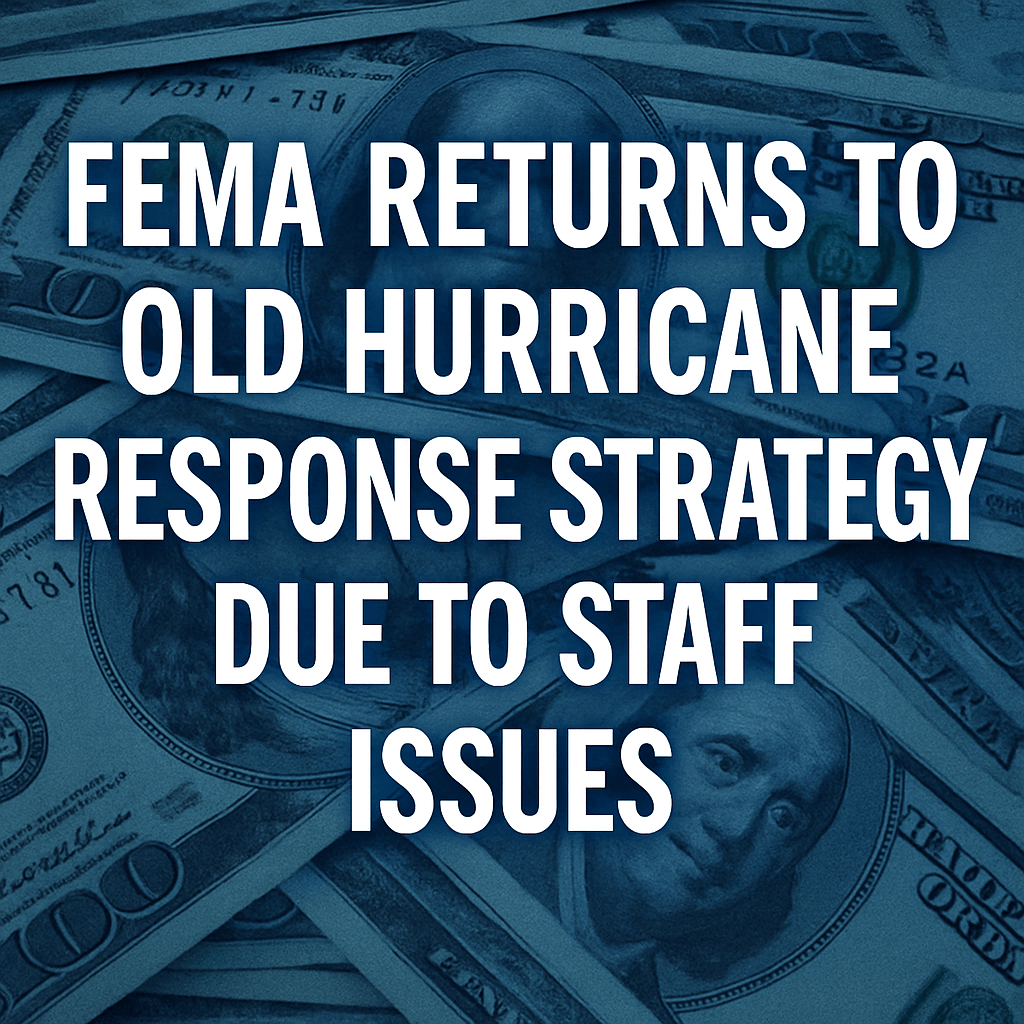FEMA Returns to Old Hurricane Response Strategy Due to Staff Issues

The Federal Emergency Management Agency (FEMA) has unexpectedly decided to maintain its existing hurricane response plan from the previous year, rather than implement an updated version this season. The announcement raises eyebrows within the agency and among stakeholders, particularly in light of significant staff attrition.
FEMA’s Decision and Its Implications
FEMA’s head, David Richardson, indicated to staff during a Monday meeting that the agency would rely on last year’s guidance as the 2025 hurricane season commenced on June 1. Such a decision is strategic but comes with potential pitfalls, especially given that an alarming number of employees have departed, creating uncertainty about the agency’s capacity to execute its existing protocols effectively.
According to reports from The Washington Post, Richardson acknowledged the challenge of forming a robust disaster-response plan due to shifting dynamics within the agency and external political pressures. He stated, “Yesterday, as everybody knows, [was the] first day of hurricane season. I didn’t realize it was a season,” a comment that has drawn substantial criticism, including from Senate Majority Leader Chuck Schumer, who publicly questioned Richardson’s position.
Continuing Challenges from Staff Departures
The staff shortages at FEMA are alarming. The agency has lost a range of experienced personnel over recent months, leading to concerns about the efficacy of traditional response measures such as door-to-door outreach in affected areas. Experts warn that without adequate manpower, even well-thought-out plans may fail to come to fruition. This situation is exacerbated by ongoing assessments predicting an above-average hurricane season, characterized by increased frequency and intensity of storms.
To dive deeper into the implications, consider that last year marked a particularly catastrophic period for weather-related disasters, with 27 separate events classified as weather and climate disasters costing over $1 billion in damages each. The total financial impact stemming from hurricanes alone reached approximately $124 billion. Cities like Asheville, North Carolina, have yet to fully recover from the devastation.
Forecasts for the 2025 Hurricane Season
Meteorological experts predict that the 2025 hurricane season will witness heightened activity in the Atlantic, further complicating FEMA’s operational challenges. The initial forecasts suggest an active season, leading to an increasing emphasis on preparedness and community resiliency.
This scenario underlines the importance of having a robust and adaptable agency capable of responding to unpredictable weather patterns. FEMA’s approach in moving forward with an outdated plan amidst ongoing staff shortages raises urgent questions on how the agency can address such challenges effectively.
Expert Insights
Seasoned emergency management experts stress the importance of sustainable staffing and training to handle the complexities of disaster response effectively. According to Dr. John E. Carver, a former FEMA advisor, “In disaster response, it’s not only about having a plan but having the people trained to execute it. The loss of seasoned staff means a loss of institutional knowledge that can undermine entire response strategies.”
As public scrutiny intensifies, the agency’s adaptability during this hurricane season will be closely monitored by various stakeholders, including state and local governments, private sector partners, and the communities that rely on its support.
Key Takeaway: FEMA’s reliance on a prior response plan amid significant staffing changes creates challenges for effective disaster management in an active hurricane season.
In summary, as the 2025 hurricane season unfolds, FEMA’s strategic decisions and operational capabilities will be tested against rising disasters and public expectations. The interplay of politics, staffing, and natural events will undoubtedly shape the agency’s performance in the months to come.